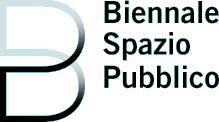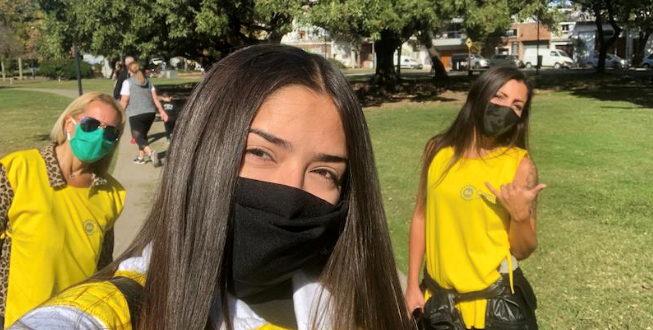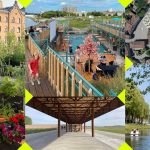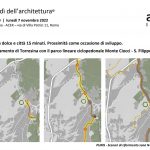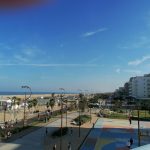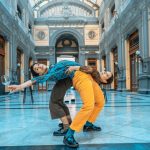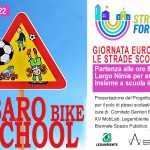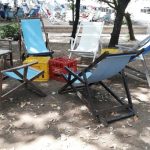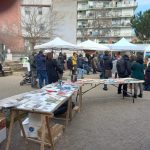Voci dal Mondo: Buenos Aires, Tokyo, Bogotá
Da Buenos Aires
nella foto “ispettori volontari” al parco Savaedra, Buenos Aires.
Il Prof. Andrès Borthagaray, presidente della Fondazione Furban e direttore dell’ Instituto para la Ciudad en Movimiento, ci invia queste informazioni preliminari in attesa di una risposta ufficiale dalla capitale argentina:
Children were allowed to go out with their parents three weeks ago for the first time since sanitary measures were taken. It was very appreciated as you might read in some news articles. We are late in the fall, but it was still particularly sunny.
Children could only go as far as 500 meters from their homes and with their parents. There were some restrictions (according to national regulations, odd ended one day, even ended the other), only during weekend days and they had to be protected by special gears. There are some measures to be taken for the next few weeks. They were supposed to go only through the sidewalks and internal paths, not through the interior of the parks.
Le nostre domande :
1. What measures have you put in place to guarantee the safe use of public parks and gardens? Free access or by appointment? Did you feel the need to provide special surveillance?
2. What measures hav ebeen taken for the safe play of chidren? Have playgrounds been closed ?
3. How have accompanying adults behaved?
4. In view of the limitations you may have in your city, what are the main problems releated to the enjoyment of parks and gardens on the part of children?
5. What kind of advice based on your experience would you feel like providing?
6. Have your municipality’s safety choices been taken in consultation with other municipal departments, and/or with third-sector or active citizenry organizations? Can you specify?
Da Tokyo ha risposto l’architetto Katsiushi Goto ( che ha presentato alla Biennale i suoi studi e progetti in materia di biblioteche pubbliche).
1. After emergency declaration by the national government, the ward puts up signage to cooperate avoiding congestion, closed space, close distance in the public park. Some parks, which are able to close with gate or such structure, are closed or partially restricting entry. Otherwise, most of the park is open as usual.
In terms of ticketing or prior booking system, it is against the principal of public park which is access anytime by anyone, therefore both options are not considered.
Surveillance camera is not installed due to privacy of user, however park guards may be employed in future as it may also be a solution to unemployment because of COVID
2. Following the decision of Tokyo metropolitan government policy to restrict the use of playground equipment, the ward also closed all equipment, but playground (open ground) is not closed.
3.Basically asking to cooperate avoiding congestion, closed space, close distance in the public park and considerate towards other users.
4. From point of view of spreading of
COVID, it is advisable not to use public park. But appropriate amount of
physical exercise is essential for the health, especially for children,
therefore use of public park is necessary for people. Most of troubles and problems are avoidable
by cooperating and being considerate of other users. This is not limited under
the current COVID situation, but also in general.
5. It depends on the age of children, we do advise not to remove shoes and use
equipment and park, especially playground with water. Some park without park staff, there might be
broken glasses and such hazardous object on ground.
6. No external consultation has been taken but
receiving opinions and advises from volunteer groups and citizen. In terms of maintenance and repairing of
equipment and other objects, it is done according to the guideline issues by
Ministry of Land, Infrastructure, Transport and Tourism.
Da Bogotá ha risposto N. Yovany Jiménez che e’ stato direttore del dipartimento “Defensoria del espacio Publico” e promotore del primo congresso latinoamericano in materia di spazio pubblico. Lo ringraziamo caldamente per averci inviato la risposta alla nostra inchiesta da parte dell’Istituto per lo sport e le attivita’ ricreative del Distretto di Bogotá.
- To this day, Parks have not been enabled to be used, following government sanitary policies . People can go outside and exercise from 6:00 am to 10:00 am every day, following strict measures, such as mandatory face masks, social distancing, and age restrictions.
We, as IDRD, have about 125 workers in parks, and streets were people use to gather to walk, run, or ride a bike. We need special surveillance, in order to keep people spread around the streets. About 85% of people think they have no contagion risks. (mayor´s office survey) - Playgrounds have been closed for everyone. However, since 11th May, children have been able to go out, accompanied by an adult, three times a week and a half an hour per day. these activities were restricted and only allowed for citizens between 18 and 70 yeasr old.
The Institute of Recreation and Sports (IDRD) is streaming sessions with activities looking for keep children active inside their homes, through social media and virtual channels. - In a survey carried out by the Institute of Recreation and Sport (IDRD), only 25% of adults surveyed stated they were afraid that children can be infected, however, 96.3% said that they did wear facemasks when they went out. Eventough, many adults are not respecting rules, even if they are aware that parks and playgrounds can not be used, because of high contagion risk by touching metallic and plastic surface.
- People, due to the pandemic, are geting aware of the role of parks and green areas for mental and physical health, therefore, some open parks are getting crowded, so we have to find a way to enforce sanitary measures oriented to curb COVID19 cases. In Bogotá, we are still getting to the top of the curve of COVID19 contagion, so we keep playground and parks closed. We must invest heavily in surface sanitation and in adaptations to keep occupation below 30% and in order to ensure social distancing, and access control.
- clear, is more effective than fines. We must monitor frequently, areas where people usually gather, such as sports courts and playgrounds, we think that physical barriers forbidding its use are best.
- Sanitary measures have been taken in coordination with national government and taking account of others municipalities experience. Some special measures have been taken for the Municipality of Soacha and tourist sites in Cundinamarca. We have begun to open some productive sectors, such as construction. For instance, Bogotá government has taken account of firms demands and agreed some measures to get back to work containning risks, such as putting in place 80 additional kms of bikepaths, enforcing strict protocols that must be approved by health secretary, and allowing several working turns to avoid peak hours in public transportation.
